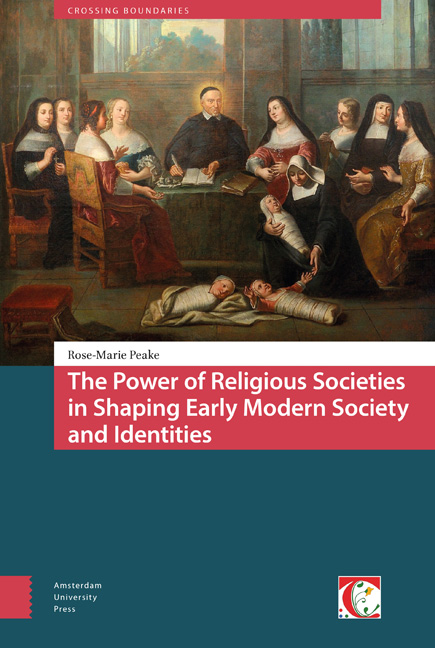Book contents
- Forntmatter
- Contents
- Acknowledgements
- Three Worlds, Three Portraits: Introduction
- 1 At the Cradle: Gender and Power in Seventeenth-century Parisian Society
- 2 Portrait of Louise de Marillac: Ensuring Resources for Moral Management
- 3 Portrait of the Daughter of Charity: Safeguarding the Execution of Moral Management
- 4 Portrait of the Underprivileged: Managing the Ignorant Substitute of Christ
- From Conservative Moral Management to Survival: Conclusions
- Sources
- Note on Vocabulary
- Index
3 - Portrait of the Daughter of Charity: Safeguarding the Execution of Moral Management
Published online by Cambridge University Press: 21 November 2020
- Forntmatter
- Contents
- Acknowledgements
- Three Worlds, Three Portraits: Introduction
- 1 At the Cradle: Gender and Power in Seventeenth-century Parisian Society
- 2 Portrait of Louise de Marillac: Ensuring Resources for Moral Management
- 3 Portrait of the Daughter of Charity: Safeguarding the Execution of Moral Management
- 4 Portrait of the Underprivileged: Managing the Ignorant Substitute of Christ
- From Conservative Moral Management to Survival: Conclusions
- Sources
- Note on Vocabulary
- Index
Summary
Abstract
The chapter turns to the body of members of the Daughters of Charity to examine the ways the directors managed the morality of the sisters. The chapter argues that the way the sisters were trained to become good Daughters and Christian women was an important survival strategy for the Company. The chapter opens with an analysis of the delicate position of the sisters as active women religious in avoidance of enclosure which would have made their vocation impossible. The subsequent sections discuss the ways the directors aimed to manage the sisters’ spiritual position by controlling their behaviour in public space, education, and devotional practices in order to negotiate an orthodox religious identity and avoid enclosure.
Keywords: monastic enclosure; religious identity; bodily mortification; education; lower strata of society
The main aim of the nuns of place Royale is to help the poor sick women they receive, but not the men. As this is part of their Rules, they believe they will save their souls by observing them. But you, my dear sisters, you have given yourselves to God in order to live as good Christian women, as good Daughters of Charity […]’.
Moving from the upper strata of the Company of the Daughters of Charity – namely, Louise de Marillac and her elite networks – to the portrayal of the poorer body of members of the Company, the third chapter ponders: what composed good Catholic womanhood, referred to in Vincent de Paul’s conference quoted above, and why? The aim of the chapter is to analyse how and why the morality of the Daughters were managed in order to create certain images of them. Moreover, the chapter is also interested in deciphering the importance of these images in the execution of the moral management activities of the Company.
The chapter begins with an introduction to the sensitive position of the sisters of the Company of the Daughters of Charity as a body of laywomen assembled in an unenclosed community with religious convictions. The situation is contextualized as a reflection of the centuries-old tension in female spirituality between the two ideals of Martha and Mary. In the religious atmosphere of the Catholic Reformation, the only suitable religious vocation for women was the one pursued in the image of Mary in an enclosed monastery.
- Type
- Chapter
- Information
- Publisher: Amsterdam University PressPrint publication year: 2020

